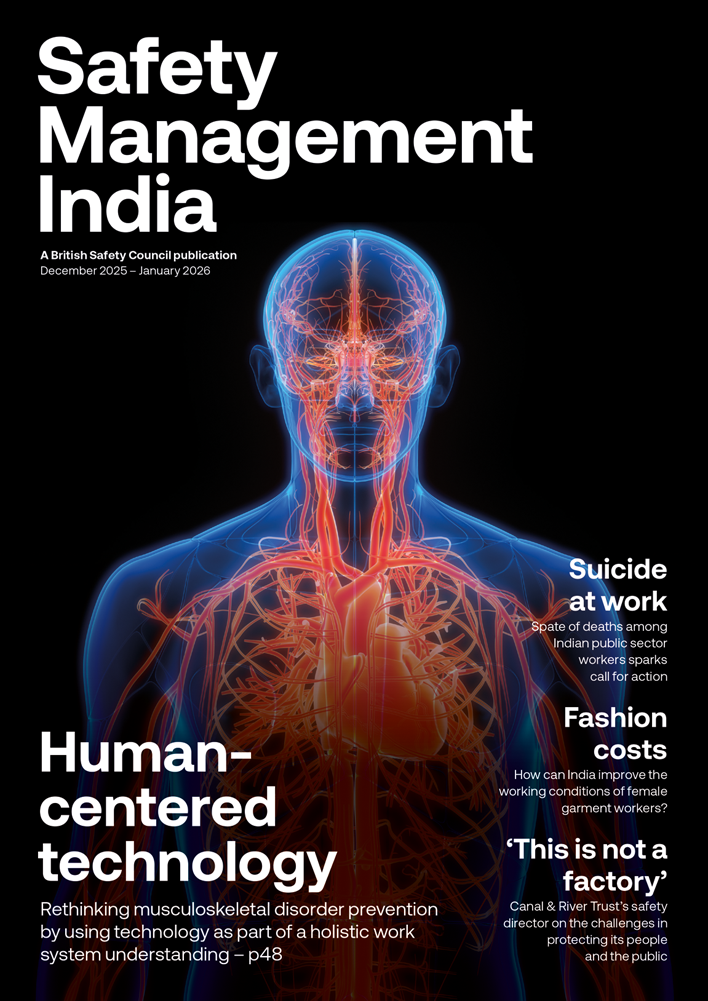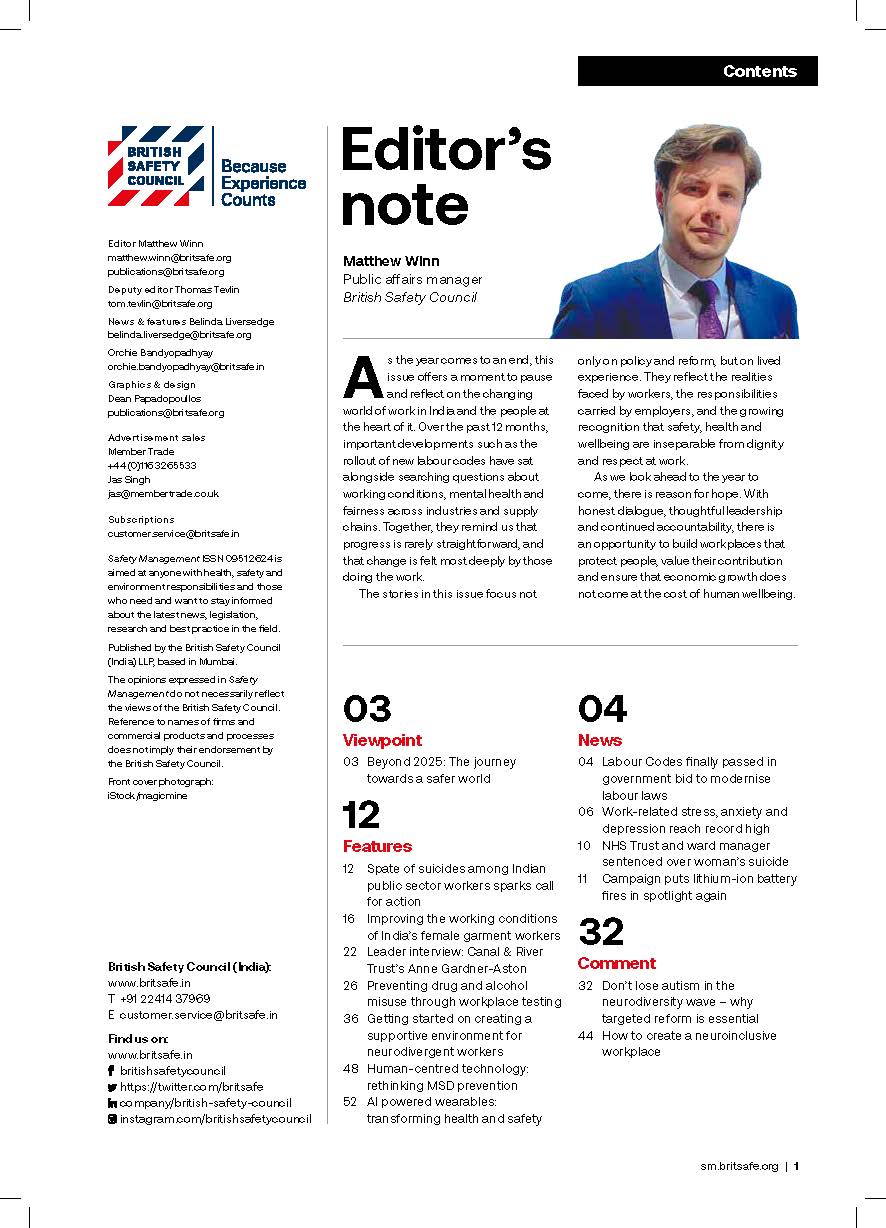Research by the Ladder Association has repeatedly revealed serious concerns about the safety and quality of telescopic ladders sold in the UK via online marketplaces. Now, the Association is expanding its market surveillance, research and testing programme to cover ladders sold by physical stores, to both root out non-compliant ladders and identify those that are good quality and safe to use.
Opinion
Ladder Association embarks on latest phase of market surveillance
The Ladder Association has announced it is embarking on its latest phase of market surveillance activity to check compliance of telescopic ladders bought from the most popular online platforms and dedicated DIY retailers.
The latest study, part of the Ladder Association’s ongoing ‘Step Up to Safe Ladders’ campaign, uses data gathered from the Association’s consumer research study published in 2024, to guide the source of telescopic ladders samples for testing against the current product standard EN 131-6.
The 2024 research survey found that 72 per cent of the 1,063 consumers surveyed had bought their telescopic ladder online, and overall, that the ladders were primarily bought from home retail giant B&Q (20 per cent online and 10 per cent in-store); leading online retailer Amazon (20 per cent); and well-known hardware and home improvement retailer Screwfix (13 per cent online and 2 per cent in-store).
While recent campaign activity by the Ladder Association has centred around the widespread availability of unsafe and potentially dangerous ladders sold across online platforms, this latest phase of research seeks to also evaluate the compliance of telescopic ladders sold via the most popular dedicated DIY retailers, to provide a true overall reflection of how these products are being purchased by consumers.
Making sure consumers are safe is the Ladder Association’s number one priority and we are committed to raising awareness of potentially harmful ladders. Working at height can be risky enough, without the additional danger of shoddy ladders – every 11 minutes in the UK, someone attends A&E after sustaining an injury involving a ladder. A fall from height can cause life changing injury, and in some cases, can even be fatal.
 Testing on telescopic ladders is currently under way at a laboratory in Cambridgeshire. Photograph: Ladder Association
Testing on telescopic ladders is currently under way at a laboratory in Cambridgeshire. Photograph: Ladder Association
From our previous market surveillance activity, we are aware of below-standard ladders being sold to unsuspecting consumers, particularly via online platforms. Our latest phase of market surveillance uses the learnings from our consumer research survey to help guide product selection for testing and provides a representative sample of the market.
The Ladder Association is committed to undertaking continued market surveillance, not only to help root out dangerous ladders, but to also identify those that are good quality and safe. This will give consumers the knowledge and information they need to buy with confidence, whether that’s online or in-store.
Testing is currently under way at the UK-based test laboratory and certification body, Test and Research Centre in Soham, Cambridgeshire, with the results expected for release early summer.
The Ladder Association is the voice of the industry and promotes the highest standards and competence, while working with major bodies including the UK’s occupational safety regulator, the Health and Safety Executive. The Association harnesses its own expertise along with that of its member companies to support technical excellence, safety and best practice in the interests of ladder users everywhere. All Ladder Association members are required to make or supply ladders that meet the current product standard.
 The Ladder Association carried out telescopic ladder surveillance studies and safety testing on multi hinge-joint (multipurpose) ladders. The ladder pictured failed.
The Ladder Association carried out telescopic ladder surveillance studies and safety testing on multi hinge-joint (multipurpose) ladders. The ladder pictured failed.
Ladder Association advice on buying safe ladders
- Take some time to research before you buy. You can carry out a quick online check of the company or brand to check their business location and visibility in the market. If they don’t have a UK/EU address then it can make it much more difficult to contact them if you have an issue after you buy.
- Check product reviews. These are a great way of hearing first-hand from other consumers and often give valuable insight in the product quality, mainly if it falls below standard. But beware, some companies and brands post fake positive reviews, so read them carefully, note where the reviewer is based or how many reviews they have previously posted.
- Don’t make decisions solely on price. But, if something is very cheap, you should question why. That’s not to say it’s poor quality, but it’s certainly a prompt to make you do a bit more homework. Genuine quality products can cost more to manufacture due to the enhanced testing and cost of materials, but equally, a higher price doesn’t necessarily mean quality.
- Remember, online platforms take little or no responsibility for the quality or safety of the products sold on their platforms and place the responsibility for safety firmly with the seller. Don’t assume product safety and compliance checks have been carried out by them before they placed them online for sale.
- Don’t assume physical stores sell only safe products. They could knowingly – or unknowingly – be stocking products that don’t meet current product standard EN 131. Check labelling for print quality or spelling errors, check product quality as best you can, and speak to the retailer if you have any questions.
- Avoid ladders that are CE or UKCA marked. Despite what you might think, ladders cannot be CE or UKCA marked, so avoid any that bear those markings.
- Buy from a Ladder Association member. Members are committed to high standards of safety, and by joining the Association, they pledge to only make or sell ladders that comply with EN 131 (or international equivalents) and are certified by a third-party Conformity Assessment Body. A full list of members can be found on the Ladder Association website: ladderassociation.org.uk
- When you receive your ladder, check it. Check the product, the instruction manual (every ladder should come with one) and the labelling on the ladder itself.
- If you think the ladder is unsafe, dangerous or not made to standard, don’t use it! You should then contact your local Trading Standards team or report via our website: ladderassociation.org.uk/step-up
For more information on the ‘Step Up to Safe Ladders’ campaign and to view all three of the Ladder Association’s market surveillance reports and the outcomes of its consumer research survey, go to:
ladderassociation.org.uk/step-up/
Peter Bennett OBE is executive director at the Ladder Association
OPINION
Don’t lose autism in the neurodiversity wave – why targeted reform is essential
By on 10 December 2025



